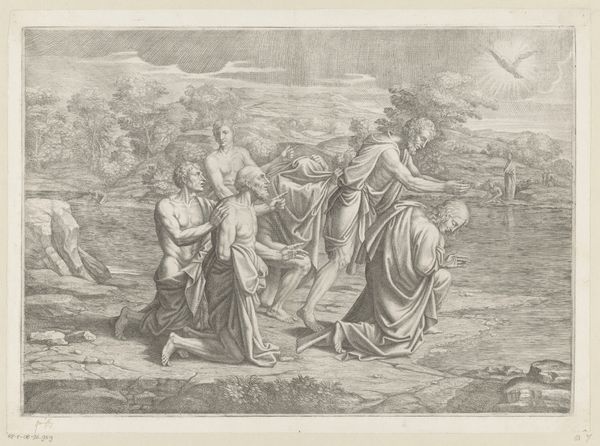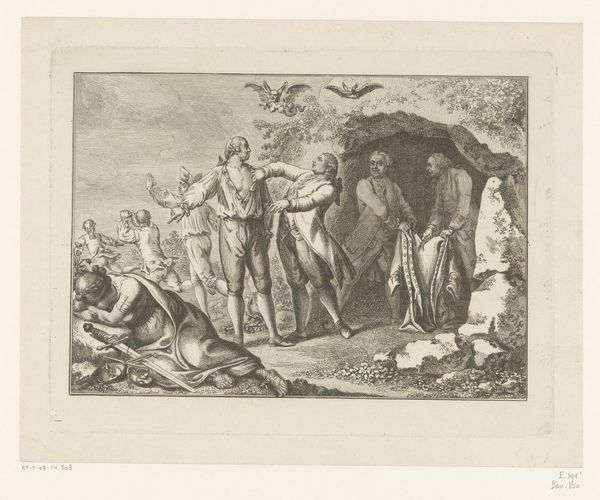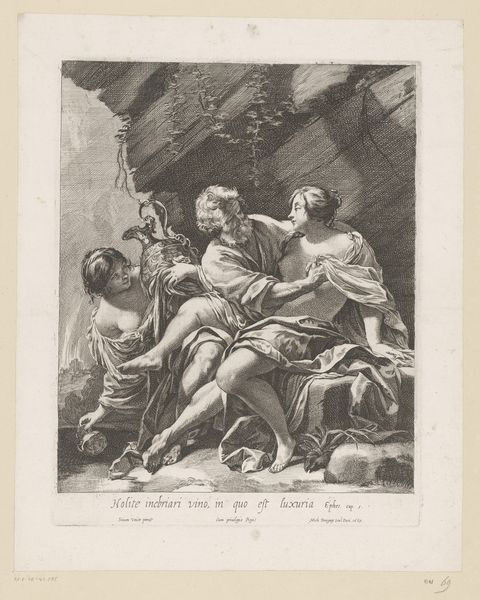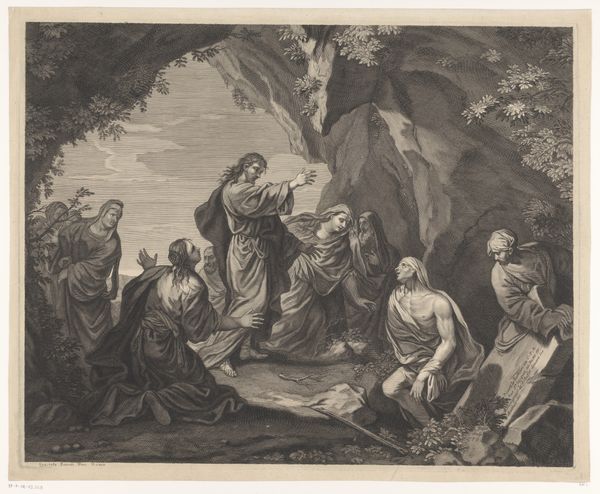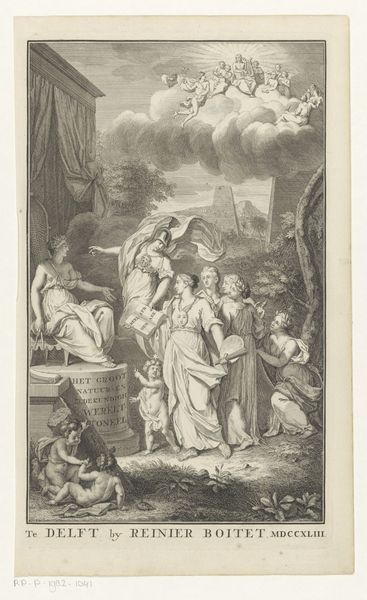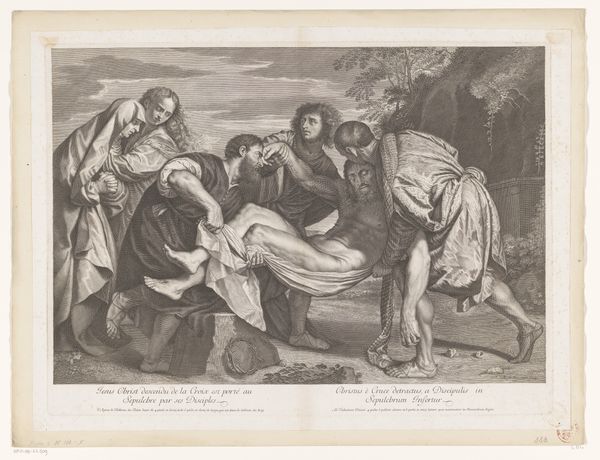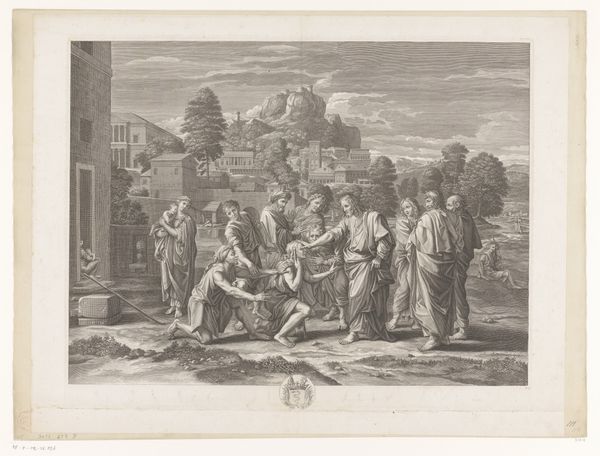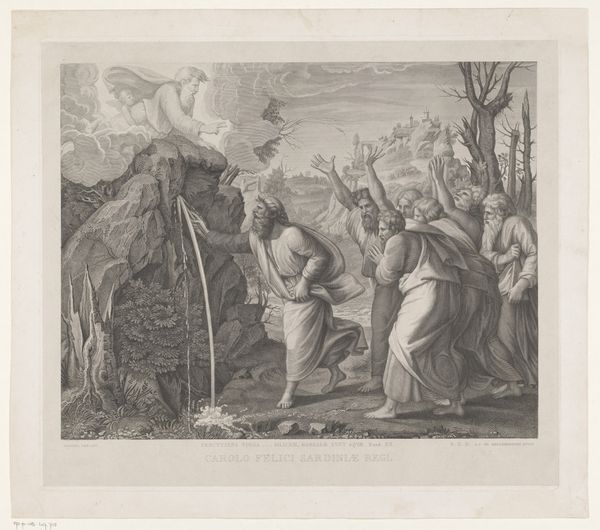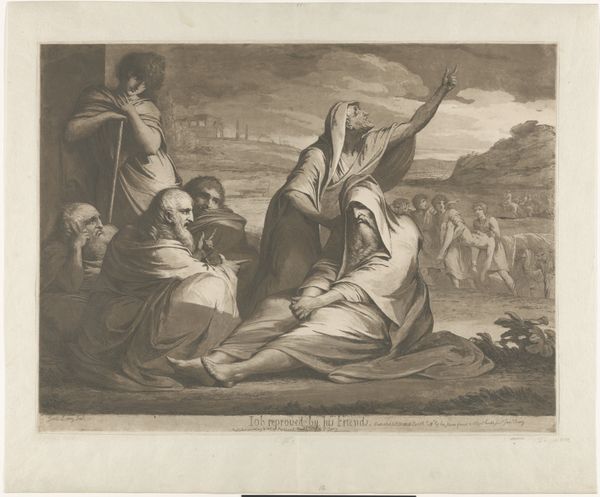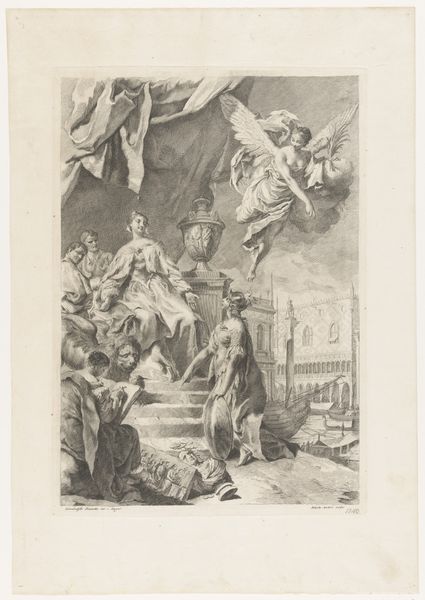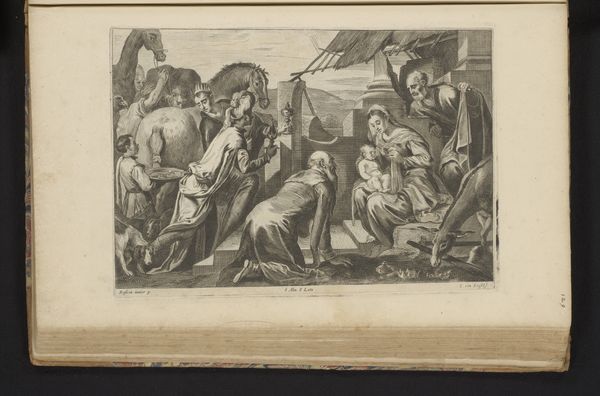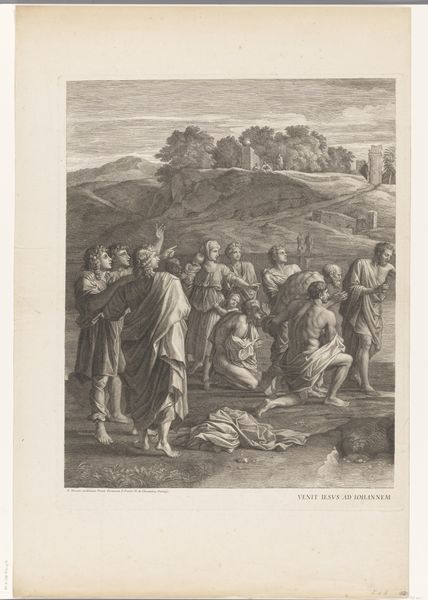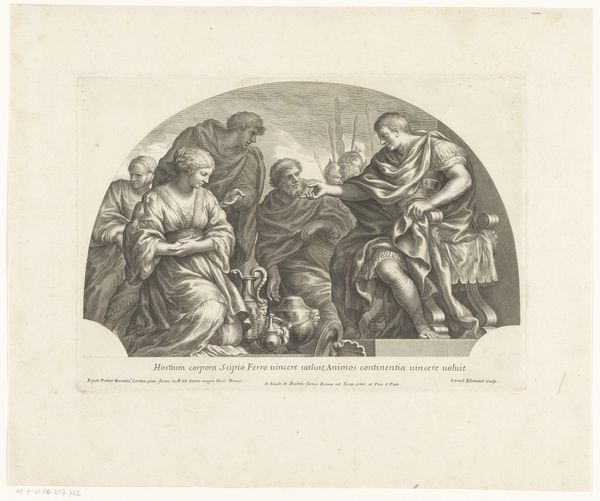
Engel wijst de drie vrouwen op het lege graf van Christus 1655 - 1699
0:00
0:00
print, engraving
#
baroque
# print
#
old engraving style
#
classical-realism
#
figuration
#
pencil drawing
#
line
#
history-painting
#
engraving
Dimensions: height 409 mm, width 493 mm
Copyright: Rijks Museum: Open Domain
Editor: We're looking at "Angel Pointing out the Empty Tomb to the Three Women" by Jean Louis Roullet, made sometime between 1655 and 1699. It's an engraving. The women’s expressions are really dramatic. What can you tell me about the historical context that might illuminate the cultural meaning of this artwork? Curator: This piece reflects the Baroque era’s emphasis on dramatic storytelling and emotional engagement, using religious themes to communicate power and moral lessons. The scene itself, the discovery of the empty tomb, served a vital role in reinforcing the doctrines of the Counter-Reformation. How do you think prints like these functioned within 17th-century society? Editor: Well, since this is a print, and therefore reproducible, would it have been circulated as a devotional aid, helping spread specific interpretations of the scripture promoted by the Church? Curator: Precisely! Prints allowed for the dissemination of imagery, impacting public perception and shaping religious understanding across various social strata. Note the classical idealism combined with the intensely emotional portrayal of the figures – a common thread linking art, religious belief, and socio-political messaging of the time. Also, how does the artist's choice of making a print impact its significance compared to, say, a painting of the same scene? Editor: The accessibility, maybe? This makes it more influential as an easily reproduced artwork which could be distributed in society on a larger scale, influencing a wider audience. Thanks, that’s given me a new perspective! Curator: Indeed, the means of production fundamentally changed art's social function. Considering this engraving moves it beyond pure aesthetics to active socio-cultural engagement, revealing power dynamics in imagery.
Comments
No comments
Be the first to comment and join the conversation on the ultimate creative platform.

